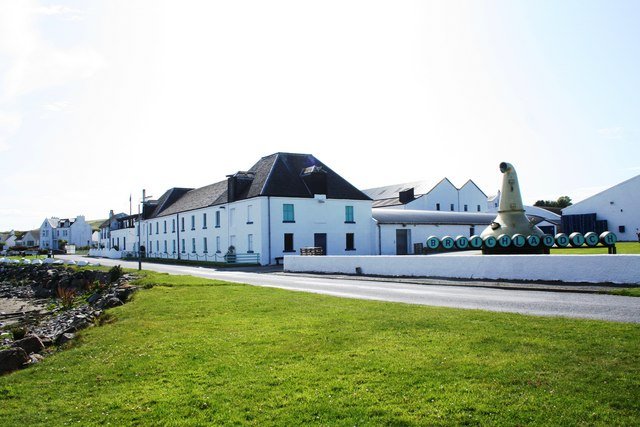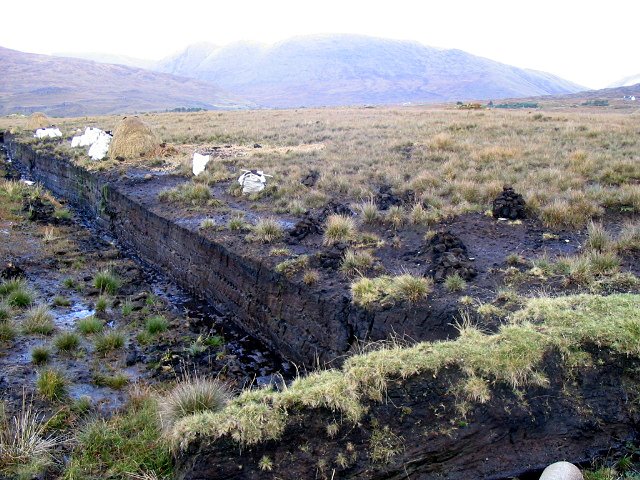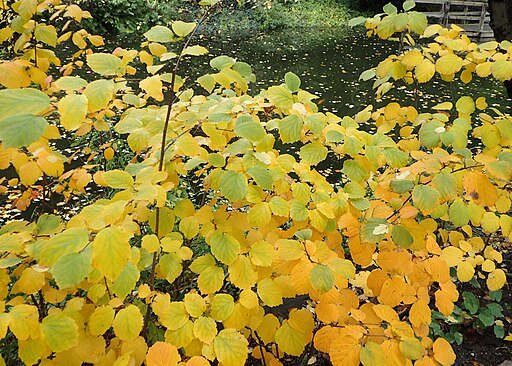The Fothergilla
The history of the Fothergilla, how peat is made from drowning plants, and why doctors make good botanists.
Mt. Airy Fothergilla, April 24th
On the cool rocky coast of the southern Hebridean island of Islay, just past a lovely stretch of rolling green hills, sits a distinct white building with turquoise trim and shutters. A visitor here would not mistake the conspicuous aromatic blast of smoke wafting from the place, like a campfire on a beach. This is the Bruichladdich distillery, built originally from stones collected along the adjacent Loch Indaal shore in 1881 by the Harvey brothers, William and Robert. Inside is crafted some of the peaty-est, most flavorsome single malt scotches in the world. To put it in some perspective, a lightly peated malt can have 10 to 15 parts per million of phenol, a lightly acidic water soluble aromatic organic by-product of the peat fueled drying process. One that's heavily peated can have about 40 to 60ppm. The most heavily peated whisky ever recorded, Bruichladdich's Octomore 8.3, released in 2017, measured a completely bonkers 309 ppm. That’s a lot of peat.
Bruichladdich Distillery. You can almost taste the magnificence.
The legendary Octomore.
Peat is the surface organic layer of a soil starved of oxygen. It occurs when waterlogged environments stifle air exchange, such as in the so called peat bogs; the anaerobic conditions inhibit decay and the vegetation accumulates and compacts. (Our Otzi friend, from the last post, failed to decompose for very similar reasons, as the glacier, much like a bog, inhibits exposure to oxygen.) Leafy debris amasses over thousands of years, and areas dense with peat can and have been used to study historical vegetation and climate. Because of its concentrated carbons, peat burns fantastically. Some underground peat fires are known to have smoldered for centuries and the compacted dried soil has been used as a fuel source in Ireland and Scotland as far back as the Roman period (100 BC to 500 AD). Peat is routinely harnessed to dry the malted barley needed for a fine Scotch Whisky, and in so doing imparts to it a tantalizing earthiness.
A peat bog in Ireland.
A less well known source of peat is the pocosin, a type of palustrine (from the latin palus meaning marsh) wetland. Pocosins occur principally in the southern portions of the Atlantic coastal plain of North America, spanning from southeastern Virginia, through North Carolina, and into South Carolina. Like the mires and bogs of Europe, pocosin soils are oxygen and nutrient poor and therefore cater to only a very select species of vegetation. Pond pines and Loblolly pines thrive here, as do a few foliated carnivores, the Dionaea muscipula and Sarracenia rubra, or Venus flytrap and Sweet Pitcher Plant respectively. Shrubs are particularly common, earning the pocosin a more familiar name: ‘shrub bog.’ Amongst the shrubs, clamoring skyward from the thick black pocosin muck, is the Fothergilla gardenii.
Also known as the Dwarf Fothergilla or Coastal Fothergilla, F gardenii is a genus of shrubs in the witch-hazel family (Hamamelidaceae) with seasonally changing leaves and Seussian puff-like flowers. These have a delightful honey-like fragrance that lasts 2-3 weeks in mid spring. Natively restricted to the coastal southeastern U.S. wetlands, they thrive only in transitional zones including wet pine savannas and shrub bogs. It is, in part, their yearly abfall that creates the murky American peat of the pocosin. If Scotch were distilled in the US, the Fothergilla would be an intrinsic component of their terraceous terroir.
The specific epithet, gardenii, pays tribute to Dr. Alexander Garden, a Scottish physician and zoologist, who must have been allured by the damp moorish similarities to his homeland when he settled in Charleston, South Carolina in 1752. He was the first to collect and describe F. gardenii, and introduced it to England in 1765. The genus name is for Dr. John Fothergill (1712-1780), another physician and plant enthusiast. It was he who gave the first recorded lecture, in 1745, on mouth to mouth resuscitation and went on to produce the original description of trigeminal neuralgia in his work Of a Painful Affection of the Face. Anthophiles, it seems, are genetically predisposed to practice medicine.
Check out those dope fall leaves.
There are only two species of fothergilla in the Eastern US, the large mountain variety (Fothergilla major) and the aforementioned dwarf (F. gardenii). The two are almost identical, except for flower and leaf size, and overall dimensions of the shrubs. Large fothergilla may reach 6 to 10 feet in height, whereas the dwarf reaches only 3. Several named cultivars are now available, but by far the most beautiful is a hybrid between the two species called ‘Mt. Airy’ (or ‘Mount Airy’). This naturally occurring hybrid was discovered at Mount Airy Arboretum in Cincinnati, Ohio by Dr. Michael Dirr of the University of Georgia. ‘Mt. Airy’ may grow to 6 feet tall, has intense fall color and larger flowers. It is the variety I grow here in Indiana. “They do not have a bad season,” writes Dirr, "They have assumed their rightful place in American gardens as magnificent shrubs that offer superb flowers and foliage, in both summer and fall.”
Basics
Common Name: dwarf fothergilla
Type: Deciduous shrub
Family: Hamamelidaceae
Zone: 5 to 8
Height: 3.00 to 5.00 feet
Spread: 3.00 to 5.00 feet
Bloom Time: April to May
Bloom Description: White
Sun: Full sun to part shade
Water: Medium
Maintenance: Low
Suggested Use: Hedge
Flower: Showy, Fragrant
Leaf: Good Fall
Knowledge Sources
https://hort.extension.wisc.edu/articles/fothergilla/
https://www.gardendesign.com/shrubs/fothergilla.html
https://hgic.clemson.edu/factsheet/fothergilla/
https://en.wikipedia.org/wiki/Fothergilla_gardenii
https://en.wikipedia.org/wiki/Hamamelidaceae
https://www.mountvernon.org/the-estate-gardens/gardens-landscapes/plant-finder/item/fothergilla/
https://www.rickdarke.com/Fothergilla.pdf
https://oceanservice.noaa.gov/facts/pocosin.html
https://peatlands.org/peat/peat/
https://www.iucn-uk-peatlandprogramme.org/about-peatlands/peatland-benefits/culture-history
https://www.missouribotanicalgarden.org/PlantFinder/PlantFinderDetails.aspx?taxonid=245775
Image Sources
https://commons.wikimedia.org/wiki/File:Bruichladdich_Distillery_-_geograph.org.uk_-_1477857.jpg
https://commons.wikimedia.org/wiki/File:Fothergilla_major_kz12.jpg






